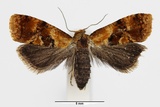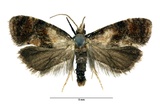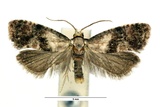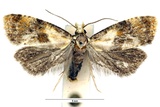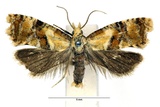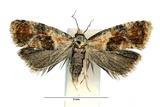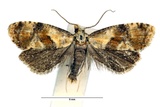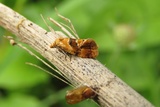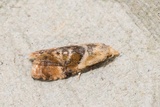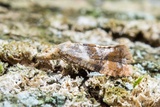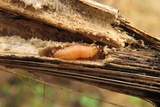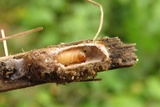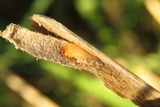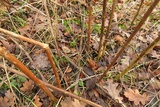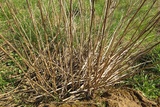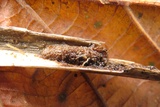Cochylidia rupicola (Curtis, 1834) Species
Last modified: Nov. 22, 2025, 3 p.m.
A rare and local species in Belgium. Possibly overlooked.
Details
- Classification
- Family: Tortricidae > Subfamily: Tortricinae > Tribus: Cochylini > Genus: Cochylidia > Species: Cochylidia rupicola
- Vernacular names
- Veelkleurige bladroller (NL), Hemp-agrimony Conch (EN), Mehrfarbiger Wickler, Wasserdost-Wickler (DE)
- Synonyms
- Cochylidia humidana (Herrich-Schäffer, 1851)
- First mention in Belgium
- De Fré Ch. 1858. Catalogue des Microlépidoptères de la Belgique. — Annales de la Société entomologique belge 2: 45–162. On page 97.
- Status
-
Native
Distribution
Imago
Wingspan 11–15 mm. Ground colour yelowish-white, extensively suffused ochreous. Markings olive-brown, variably suffused grey. Basal and subbasal fasciae present as a costal mark only. Median fascia broad, well-marked in dorsal half, more diffuse in costal half. Tornal mark may be diffuse extending to costa, often fusing with median fascia. Pre-apical spot extending as a narrow subterminal stria to tornus.
Bionomics
The larva feeds on the seeds and roots and hibernates full-fed in a cocoon between bark and pith in a last years dead stem of the food plant. The larva prepares an exit hole. The pupa protrudes the stem before emerging.
On warm sunny days the males flies in the afternoon around their food plants, while the females hides at the bases and later come to light.
Flight periods
The adults have usually been observed from end of May till late August in one generation.
Observed on
- Host plant (species):
- Eupatorium cannabinum and Lycopus europaeus
- Host plant (genera):
- Eupatorium
The larva feeds on Eupatorium cannabinum or Lycopus europaeus.
Habitat
It inhabits waste ground, open places, forest edges.
